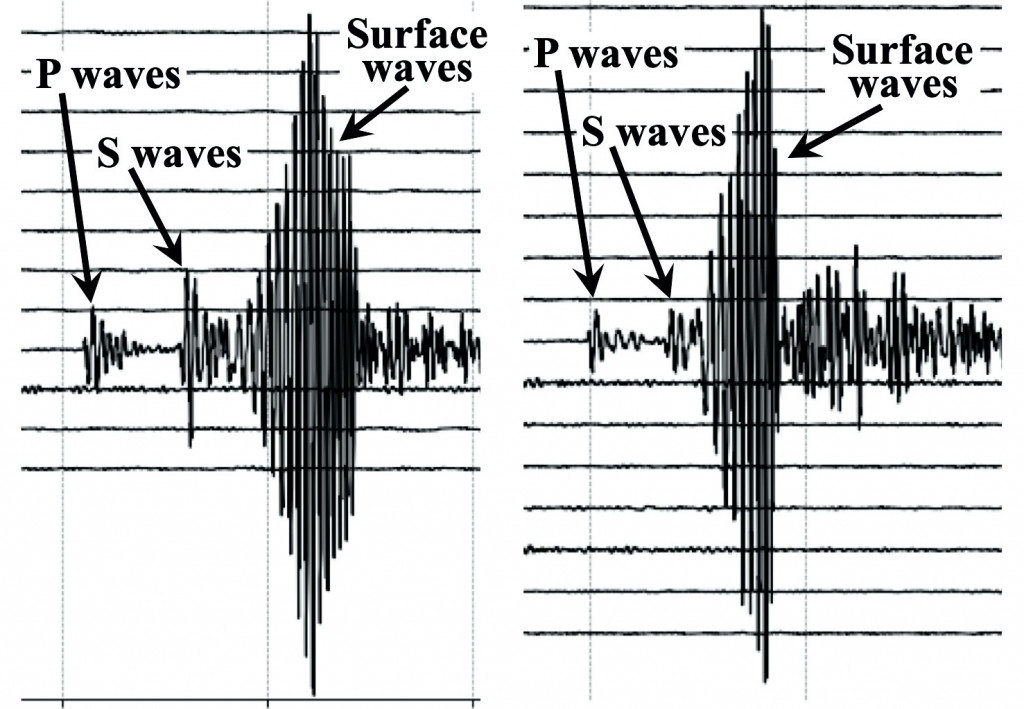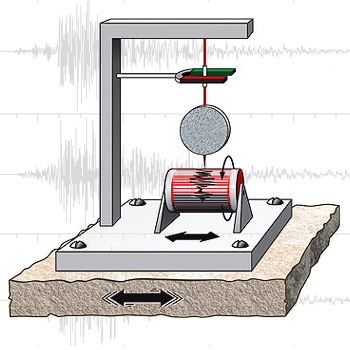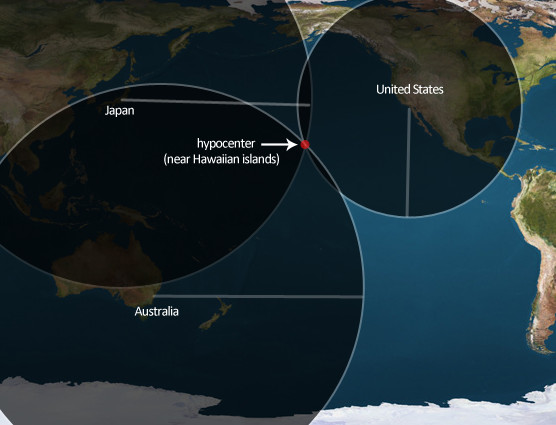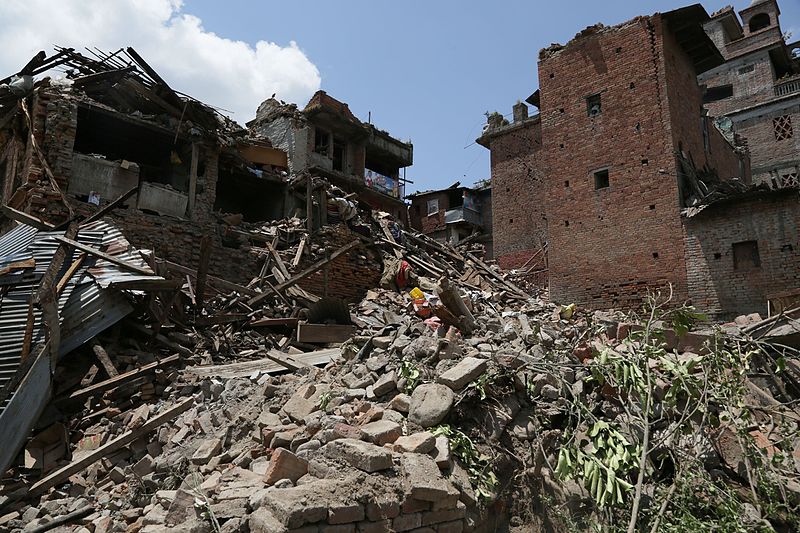Table of Contents (click to expand)
Scientists read seismogram records from seismographs placed on the earth’s surface to calculate the magnitude of an earthquake.
Earthquakes are caused when two massive chunks of the Earth’s crust (tectonic plates) collide and violently shake the ground. The plane where they slide is called the fault. The science of understanding earthquakes is known as seismology. Scientists who specialize in seismology are called seismologists.
The energy of an earthquake is carried by seismic waves, which are vibrations that travel through the planet. Seismometers are instruments that scientists use to analyze seismic waves. As seismic waves pass through, it records them as jagged patterns. The data of these patterns is called a seismogram. Seismometers are often used interchangeably with seismographs.
Basics Of Seismics
Three separate sets of waves depart from the focus of the earthquake. Primary waves, or P-waves, are the initial waves to arrive. S waves, or secondary waves, come next. They both move through the interior of the Earth. Surface waves move through the surface of the Earth and get detected last.

P-waves are compressional waves. They move by pushing or pulling particles in the direction of propagation. S-waves are shear waves. They displace the particles of matter perpendicular to their direction of motion. S-waves move at a velocity that is roughly half that of P-waves. P-waves move faster than S-waves through solids, as it requires more power to compress material than to shear it. This is why P-waves are detected by the seismographs before S-waves.
Surface waves are limited to the Earth’s surface and outer layers. They move at a somewhat slower speed than S-waves. These last waves cause the earth to roll or tremble sideways. Surface waves are the most destructive, in terms of their direct impact on the surface environment.
Also Read: Would You Feel Anything If You Flew Over An Earthquake In An Airplane?
How Do Seismographs Work?
Without seismographs, seismology would be impossible! Seismographs are the primary tool used by seismologists because they allow the collection of Earth’s vibrational data. Seismographs used to record data on paper, but the use of analogue equipment is declining. Today, digital instruments are favored. They provide a more accurate reading and allow for clearer descriptions of ground vibrations.

The foundation of a seismograph is firmly embedded in the surface, and the mass hangs freely. An earthquake causes the base of the seismograph to vibrate, but the hanging mass remains unaffected. Instead, the string it is suspended from absorbs all the motion. The positional difference between the seismograph’s shaking and stationary portions is recorded as the seismograph. This helps to measure the movement of the ground brought on by seismic waves.
Also Read: How Do We Know What’s In The Earth’s Core?
How Do They Locate The Focus?
The time difference between the appearance of the waves is determined by how far they have travelled from the focus point. The larger the delay, the farther the waves have gone. To precisely measure the appearance of seismic waves from earthquakes at known locations, seismologists have built webs of sensitive seismographs across the world.

The gap in the arrival of the P-waves and S-waves on a seismogram can only be used to determine how distant the quake was from the recorded site, but not its direction. A circle with a radius equivalent to the predicted length from the earthquake can be drawn around the facility on a map to identify the focus. Scientists then apply a technique known as triangulation, which requires at least three seismographs. The epicenter is the point at which readings from the three separate seismographs connect on a map.
Measuring The Size Of Earthquakes
The Richter scale, developed by Charles F. Richter in 1934, was the first widely applied method to quantify earthquake strength. It was calculated using a formula that took into account the distance between the seismic event and the measuring tool, as well as the magnitude of the largest pulse ever captured on a certain type of seismometer.
If the maximum amplitude of the seismic activity produced by two earthquakes located at the same range from a seismograph differs by a factor of 10, they vary on the Richter scale by one magnitude unit. Therefore, a magnitude 3 earthquake causes 10 times the amount of ground displacement as a magnitude 2 earthquake.
However, the Richter scale cannot give precise estimations for earthquakes of great magnitude. The moment magnitude scale is favored these days. The moment generated by an earthquake is a function of the fault’s movement’s distance and the force needed to move it. It is produced from earthquake records made at various places using modeling. The only scale that can reliably measure occurrences with a magnitude of M8 or higher is the moment scale.

Nearly 750,000 people died around the world from earthquakes between 1998 and 2017, representing over half of all casualties from natural catastrophes. We have long worked to increase our capacity to anticipate where and when earthquake events may occur and our comprehension of what follows when they do to deal with the death and damage they cause.
Although we still aren’t able to consistently estimate when huge earthquakes will occur, we can take precautions to lessen their devastation. We can work with professionals to create projects, dams, bridges, and other buildings that can sustain seismic shaking. We can also use our geologic expertise to locate areas where large earthquakes are more likely to occur. Finally, we can support vulnerable populations to prepare for seismic catastrophes and respond to them in the safest possible way.
How well do you understand the article above!

References (click to expand)
- How Are Earthquakes Studied? | UPSeis | Michigan Tech. Michigan Technological University
- The Science of Earthquakes | U.S. Geological Survey. The United States Geological Survey
- What Is an Earthquake? | NASA Space Place. The National Aeronautics and Space Administration
- Earthquake Magnitude, Energy Release, and Shaking Intensity. The United States Geological Survey
- How Do We Measure Earthquake Magnitude? | UPSeis. Michigan Technological University
